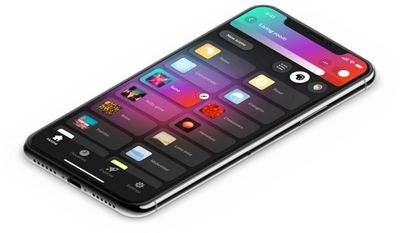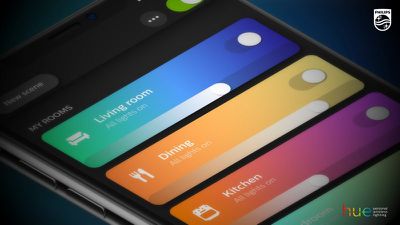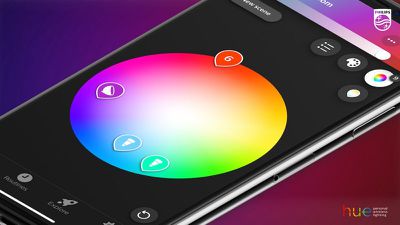Philips has announced Hue 3.0 for iOS and Android, a major update to the smart lighting system app that introduces a new-look interface, new scene options, and a redesigned color picker.

"In designing the upgrade, we took advice from lighting designers, user experience specialists and, most importantly, from our customers," said Philips Lighting marketing chief Jasper Vervoort. "The result is an app befitting the world's most loved smart lighting system for the home."
The new interface allows Hue owners to change the brightness, color, and shade of white of individual lights, and includes more convenient shortcuts for adjusting lights in fewer taps. For example, pressing and holding on a room setup or individual lights lets you change the color or set your four last used scenes.

The new color picker lets you group and ungroup lights in a room, and choose an exact shade of white or colored light from the palette. The app also comes with 30 new scenes, as well as a much-requested picture-to-light feature that lets you extract relevant colors from your favorite pictures and apply them to your lights.

Elsewhere, the app includes lighting routines to automatically dim lights at night and gradually turn them on in the morning, while the location awareness feature means lights can be set to turn on when the owner arrives at home or turn off when they leave. Meanwhile, the timer function activates lights after a specified time by triggering a scene or simply flashing the lights.
Philips hasn't given an exact release date for the Hue 3.0 update, which is said to be coming "this month", but there's a good chance it could begin rolling out as soon as today. [Direct Link]
























Top Rated Comments
We set them to only switch on when there's movement after dark, but then we wouldn't have enough lighting on darker days, or when we set the lights to always come on when there's someone, then the lights would often be on unnecessary.
Even turning the lights off was far too complicated. HomeKit does allow a timeout to dimm lights when there's no movement, but that just resulted in us waving our hands during dinner. Automations also don't bring a solution. For instance, turning all lights of after midnight resulted in people sitting in the dark sometimes. Or lights burning while there was no-one around. Currently HomeKit is far too limited and not at all smart. Nothing beats a simple wall switch. At the moment, smart lights are a gimmick.
been reading Macrumors for ages, but this is my first message. Please excuse any mistake, I'm not English (Italian, actually).
I believe that every bit of automation inside our living spaces should disappear quickly after installation and become transparent, or something is wrong. This is precisely why I choose HUE over other products: because I could substitute my old bulbs and not change the normal everyday behaviour of my family.
Other might have different needs, but for me HUE bulbs were purchased to be able to lower the power usage and be able to give a bit of color to my rooms in particular moments. When you watch a movie, for instance, or when the kid goes to sleep. But for the majority of the time I was seeking the behaviour of a “normal bulb”. One that I switch on and gives me a natural white light, and that I can switch off as I’ve been doing for all my life, without the need to access an app adding a layer of complexity to this simple task. HUE does exactly that, if you want: it can work as a normal light because 90% of the time I don’t need fancy colors/scenes or to pick the phone/tablet or talk to Siri/etc. When I’m just passing by at night to go to the kitchen/bathroom, what I need is to switch the light on. In other cases (I have some bulbs outside in the backyard), I keep everything on and program “lights on 100% at dusk”, then “20% warmer light at midnight” and finally a complete switch off at sunrise. Other bulbs, for instance, seem to remember the last setting used, and then you might have to use the app more often to get what you need, that would be terrible for me.
But apart from the first days, when you have a new toy to explore and you spend hours in the app and testing things, these smart things as I said earlier should disappear and should not ask any management by the user, other than to activate some specific scenes when needed. As my Netatmo thermostat did: I put it on, I’ve been playing with it a lot for some days, but now it manages itself, and that should be the whole point of automation. I remember it’s there when the system sends me the monthly energy balance and if and when the sensor in the living room measure an increased level of CO2.
But that’s my usage, other needs may vary, of course, and I can see that people with bigger houses might find useful to be able to control everything from an app, or a set of smart switches. I have a couple of dimmer switches and a Tap myself configured with the scenes we use the most. But I wouldn’t say the need to give up physical light switches is necessarily a showstopper, in my case it was the opposite, actually.
You definitely have to think about the set up and have it work for you. The HomePod really makes it a lot more convenient, especially for my boyfriend who uses android, cause now he can use all the scenes too.